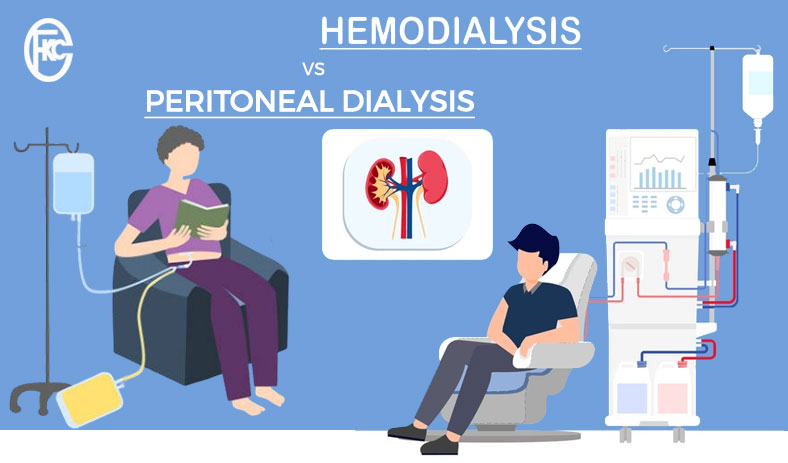
Overview:
Kidney failure requires treatments to help remove waste and excess fluid from the blood. Two primary methods of dialysis, peritoneal dialysis and hemodialysis, serve this purpose, each with unique benefits, drawbacks, and suitability for different lifestyles and medical needs.
Peritoneal Dialysis (PD)
What It Is: Peritoneal dialysis utilizes the lining of your abdomen, known as the peritoneum, as a filter to clean your blood. The peritoneum’s natural membrane allows waste products and excess fluids to move from the blood into the dialysate, which is then drained and replaced with fresh solution.
Types of Peritoneal Dialysis:
1. Continuous Ambulatory Peritoneal Dialysis (CAPD): This manual process involves performing exchanges of dialysate several times a day.
2. Automated Peritoneal Dialysis (APD): A machine performs exchanges overnight while you sleep, allowing more flexibility during the day.
Pros:
Flexibility: PD can be done at home, offering greater flexibility with daily activities.
Preserved Residual Kidney Function: PD tends to preserve remaining kidney function longer than hemodialysis.
Cons:
Daily Responsibility: PD requires daily attention and adherence to a strict schedule.
Physical Appearance: The presence of a catheter can affect body image and self-esteem.
Hemodialysis (HD)
What It Is: Hemodialysis uses an artificial kidney (dialyzer) to filter your blood. During treatment, blood is drawn from your body through a vascular access point, passes through the dialyzer where waste and excess fluids are removed, and is then returned to your body.
Types of Hemodialysis:
1. In-Center Hemodialysis: Conducted at a dialysis center, usually three times a week for about four hours per session.
2. Home Hemodialysis: Allows for treatment at home with the assistance of a trained partner, and can be done more frequently and with more flexible scheduling.
Pros:
Supervised Care: In-center HD offers care under the supervision of medical professionals.
Less Frequent Sessions: Typically done three times a week, requiring less daily commitment compared to PD.
No Equipment at Home: In-center HD eliminates the need for storing medical equipment at home.
Cons:
Time-Consuming: Regular trips to a dialysis center can be burdensome, especially for those with busy schedules.
Dietary Restrictions: HD often requires a more restrictive diet and fluid intake control.
Fatigue: Many patients feel tired after each treatment session.
Choosing the Right Option
Choosing between peritoneal dialysis and hemodialysis depends on various factors including lifestyle, medical condition, personal preference, and support system. Patients with an active lifestyle who desire more flexibility might prefer PD, while those who prefer structured, medically supervised care might opt for HD.
Conclusion
Consultation with a nephrologist is crucial in making an informed decision. The choice between PD and HD should align with your health needs, personal preferences, and quality of life considerations, ensuring you manage your condition effectively while maintaining as much normalcy as possible.